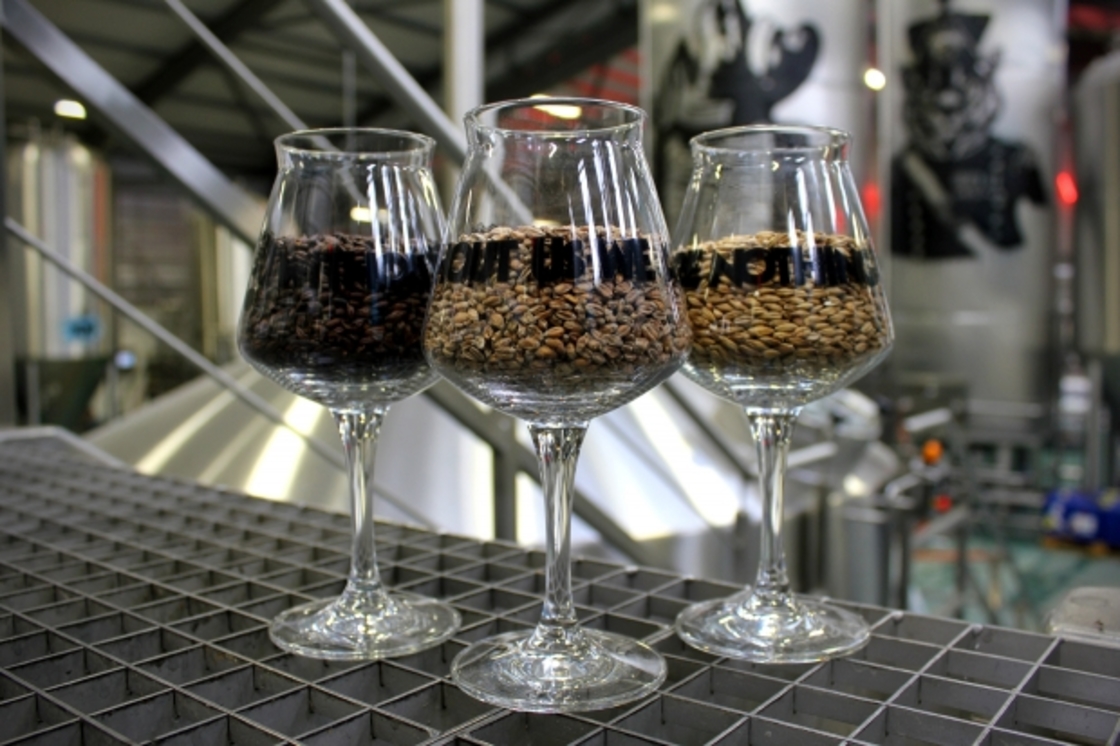Kit & Caboodle; Mill & Deaerated Liquor Plant

In the second instalment of these posts, we start on the real life brew process! Our first post was about the 50L tiny kit, used to test small batch beers on, and the pilot plant, which we just installed and are super excited to get calibrating!
This week, we take a peek at the mill, which is integral to the very first stage of brewing, and the deaerated liquor tank, which it has taken us two weeks to learn how to spell properly.

MILL.
As the name suggests, this is the equipment we use to "mill" our barley. It gently crushes the grains we tip into it to prepare them for the mash. Doing this exposes this inner parts of the kernel, which contain all the lovely starches that we will convert to sugars during the mashing process. These are the sugars that will eventually become alcohol once the yeast cells get their greedy little paws on it.
Russell gives us the low down;
"The mill is connected by an enclosed chain conveyor from our malt silos outside the brewery, past our specialty malt hopper, and up to the top of our grist bin where the newly-crushed malt drops in for each brew. From the grist bin, the malt heads into the mash tun where it's mixed with hot water (or liquor, in brewer lingo), which starts the brew process."

If we didn't have the mill, the grain would not be ready for the mash as it wouldn't be exposed to the hot water to release the sugars. By milling it on site, we ensure it is crushed to the exact amount we need, just before brewing. Crush it too much and you damage the kernels. Don't crush it enough and you'll not get enough goodness exposed.

DEAERATED LIQUOR PLANT.
This right here is one of our newer brewing toys. Ultimately, it is there to remove oxygen from water in order to minimise oxygen pick-up and reduce the amount of beer that is lost passing the beer through our centrifuge (in the Famous John Allen's words, not ours. Look at his face, all full of wisdom!)
Oxygen is the enemy of beer. Oxygen in beer bottles makes beer taste like paper or stale cardboard very quickly. This bit of equipment ensures we are doing all we can to keep it out of our packaged beers.

Tell us more, John!
"The plant both sanitises the water (via heat) and deoxygenates it all in one pass. It can produce 50HL of Deaerated water (DAW) per hour. It also reclaims some of the heat energy used during the sanitation process to preheat the incoming water.
Its basic operation is as follows:
1. Incoming water is preheated via already heated water
2. Steam then boosts the temperature to 80’C (this both sanitises the water and allows for easier purging of oxygen from the water),
3. The water is pumped to the top of the tall CO2 purging tower, (which looks like a rocket. Always good.)
4. The water passes down the tower over perforated sheets while CO2 is pushed up the column, stripping out the oxygen
5. Finally, the heat energy from the hot water is reclaimed as stated above, before the water is chilled to 5-7’C. It is then stored in the DAW buffer tank ready to be used."
So there you have it! Two essential elements in the brew process at BrewDog HQ.
What's next? Guess ;)

Join the Discussion
Comments (4)